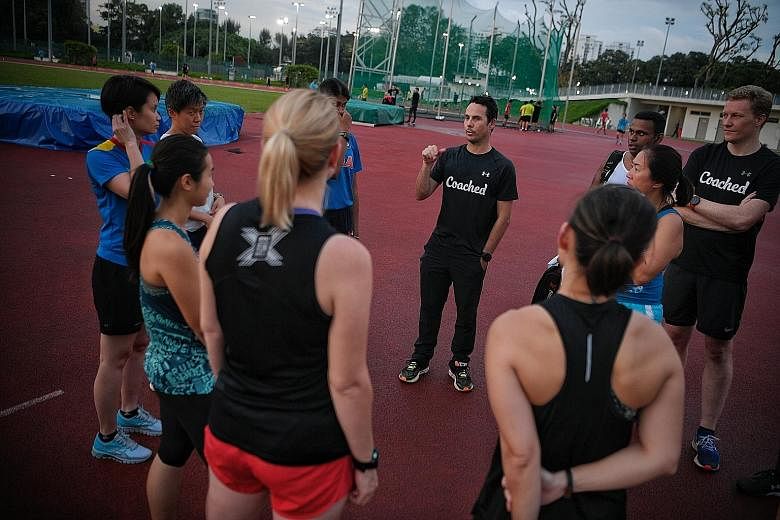If you are reading this column, it is likely you want to improve your running. That is great and over the next 16 weeks, as we prepare for The Straits Times Run on Sept 29, I aim to teach you about running performance.
Not the sexy - no pain, no gain - conventional wisdom that you have heard. I am talking about a holistic approach to training, lifestyle and racing that actually works to improve your race time, helps you to lose excess body fat and increase energy levels.
To begin, I am going to make a bold statement: Your speed does not limit you; you are limited by your ability to maintain a high percentage of your maximum speed for the duration of your race.
Most runners that I have interacted with over the past 11 years as a professional coach often believe that they are somehow not fast enough to achieve their goal time.
This belief manifests itself in the way they invest their time - regular interval training and tempo runs combined with moderate-paced long runs all aimed at getting faster.
It is interesting that when asked what their goal time is, and whether they can run at that pace for a shorter duration, say 1km, they always answer yes.

Yet, in long-distance running, it is rarely speed that is limiting you.
This game-changing idea should change the way you think about training and what you focus on each time you lace up your shoes.
If you want to run at a high percentage of your maximum speed and improve your race times, your time should be invested in working to improve the things that matter most.
YOUR ABILITY TO USE OXYGEN
The aerobic energy system is the primary metabolism that fuels endurance performance. It is trained at low intensities where plenty of oxygen is available. That means that the majority of your training should be done at a comfortable, conversational pace, not at a high intensity where you are pushing hard and puffing significantly.
YOUR ABILITY TO BURN FAT
Fat and carbohydrates are the two primary sources of fuel that your body will use during your run. Fat is burnt in higher percentages at low intensity while carbohydrates are burnt at higher rates at high intensity.
YOUR STRENGTH AND POWER
Strength and power allow you to transfer more force through the ground, which leads to an increased stride length and improvement in pace. Being strong also helps to delay the rate at which you fatigue and reduces your chances of suffering an injury.
YOUR LACTATE THRESHOLD
Lactate threshold is the exercise intensity at which blood lactate levels abruptly increase. Many scientists consider the lactate threshold to be a primary indicator of endurance exercise performance, and over time, your goal is to increase the speed at which this point is reached. For example, if your threshold is 10kmh, you want to move it to 10.5kmh and up.
The plan I have created will help to improve each of the things listed above, so follow it consistently as you build up to the ST Run.
Endurance takes time to develop, so begin today and look out for my weekly Sunday Times column, which will elaborate on these points and introduce new ideas to help to improve your overall performance and race experience.
• Ben Pulham is a former professional triathlete and the founder of Coached, a heart-rate training programme that helps you to optimise, track and enjoy your training.


